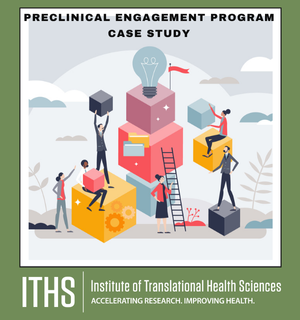Improving the SARs-CoV-2 Home Testing Kit for Vulnerable Communities
Preclinical Engagement Program Case Study
 The Challenge
The Challenge
Following reports of limited SARs-CoV-2 testing among rural and minoritized populations, a researcher wants to develop a testing platform for use in infectious disease testing for agents such as SARs-CoV-2 and influenza that addresses the needs of those most vulnerable. Reports indicated that testing was inadequate in older populations and those with limited access to health care.
Solution Offered – Community Engagement
To better understand the barriers inherent in the current diagnostic design, the researcher met with colleagues who conduct community-engaged research. These colleagues helped the researcher understand what populations might be most impacted by the pandemic, and recommended speaking with public health agencies serving Latino and American Indian communities.
Implementation & Results – Outcome
The researcher and public health officials discuss the need for sensitive saliva-based testing in health care settings but a better diagnostic for home-based tests is a rapid antigen test that can be completed within the home. The investigator creates a prototype and reaches out to the public health officials to help with product design. These officials assemble community leaders from local Latino and American Indian communities to provide feedback. Community advisors liked the simpler design that didn’t require internet or sending saliva samples to the lab. They recommended graphic instructions and translations to multiple languages in larger font to help non-English speaking individuals and older persons with vision challenges.
Impact – Benefits of Community Engagement
Home-based antigen testing technologies are well established, and two consultations with public health officials and community leaders indicated that relatively simple changes in design of ancillary materials could significantly impact testing uptake in rural and minoritized communities. In addition, the investigator has established connections with important end users of their testing diagnostics for future testing and dissemination.